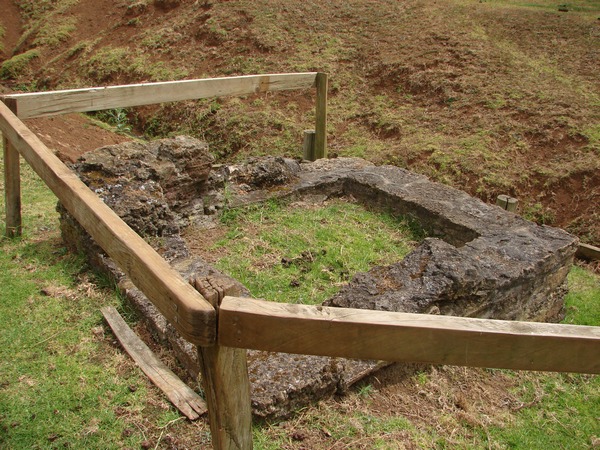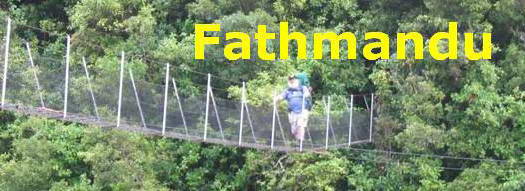At one point we get a look down into Arthur's Vale. The record has this area as the first site of European agriculture in the South Pacific.
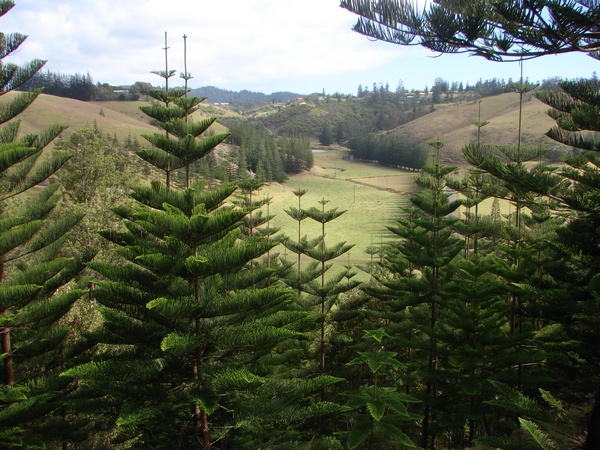
We have to retreat a little from our lookout to rejoin the walking track.
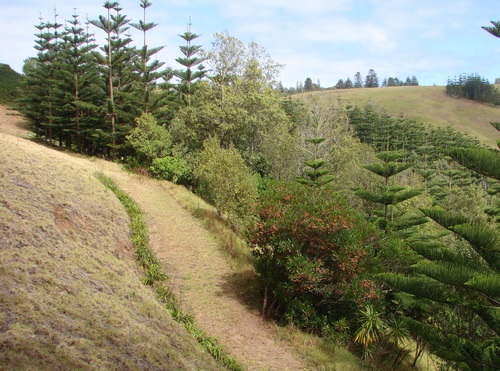
There are several introduced plants which have proved invasive. Lantana is one of these.
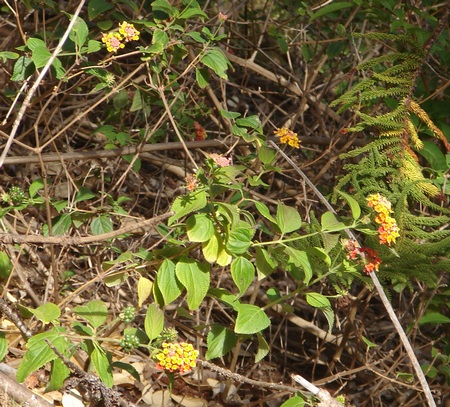
Around about here, the nature of the walk changes quite dramatically.
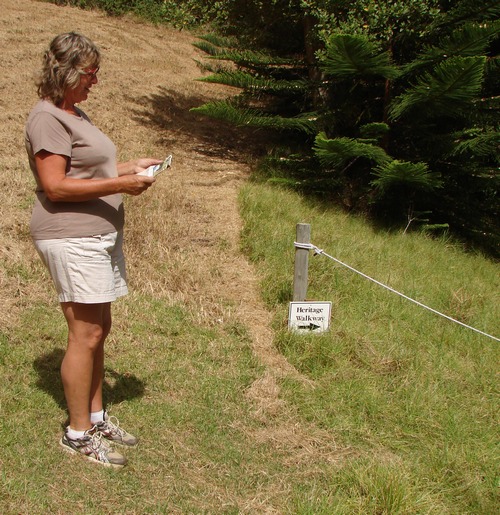
There is a steepish (for older people) descent over a surface that is not always even or predictable. A rope has been provided for steadiness, but I imagine the efforts that we have seen on the track so far will continue in the future for a totally friendly route.
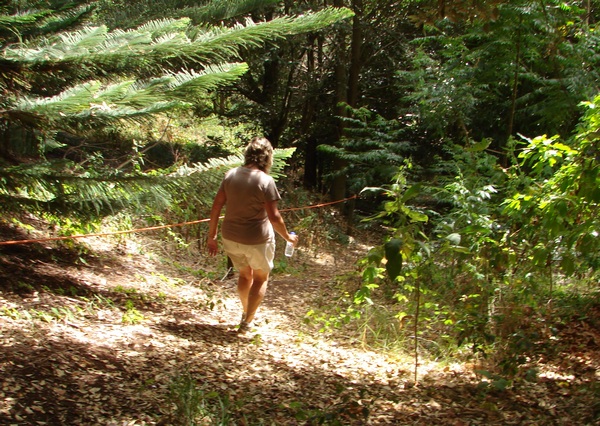
This looks like a variety of passionflower, but I haven't yet a likely identification.
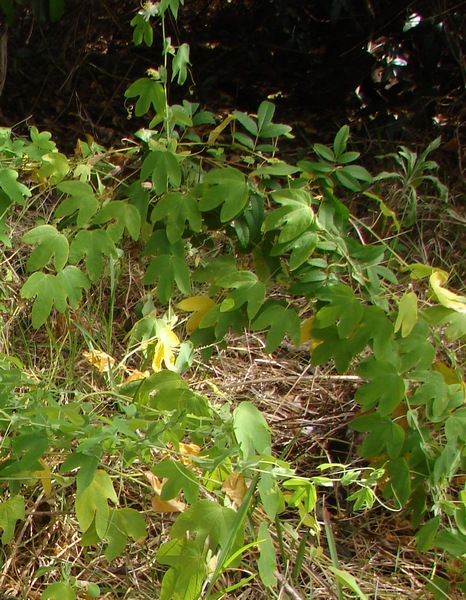
And downwards. It would be easy to slip if your attention wandered. Jandals or sandals are possibly not a good idea.
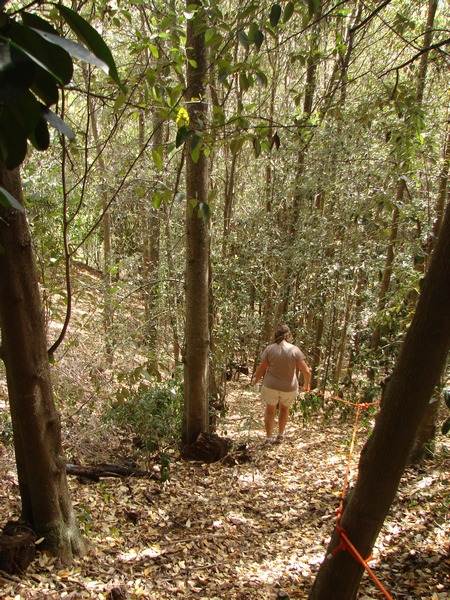
We emerge on the floor of the Vale,
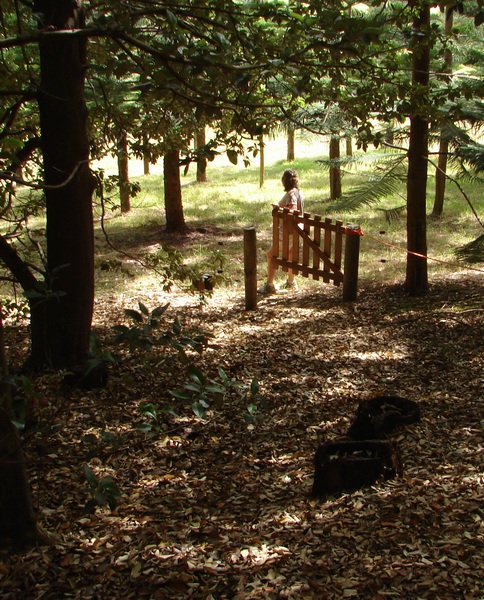
and follow a fenceline towards the first of a number of buildings dating from convict times.
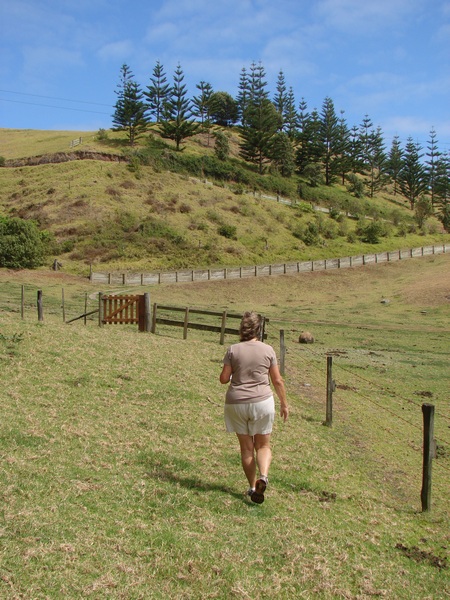
This one has been partially restored to prevent further deterioration.

The stonework is quite precise. This stone, I believe, is quarried from the reef near Emily Bay. Other buildings are of basalt stone.
I suspect we are looking at what was once a doorway between the windows. They are definitely solid walls.
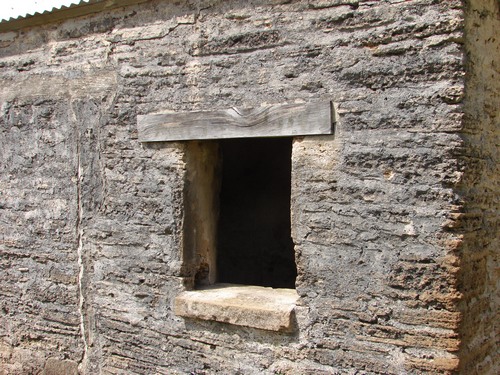
The present opening is on the wall to the right and as we look through I'd say that was almost certainly a door at one time.
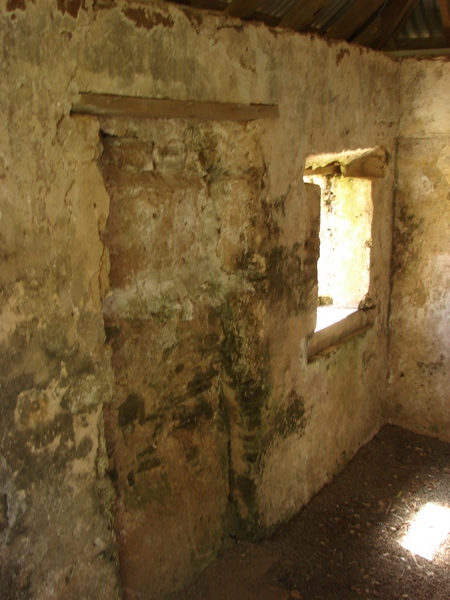
The fireplace is to the right of the existing door. An interesting piece of construction.
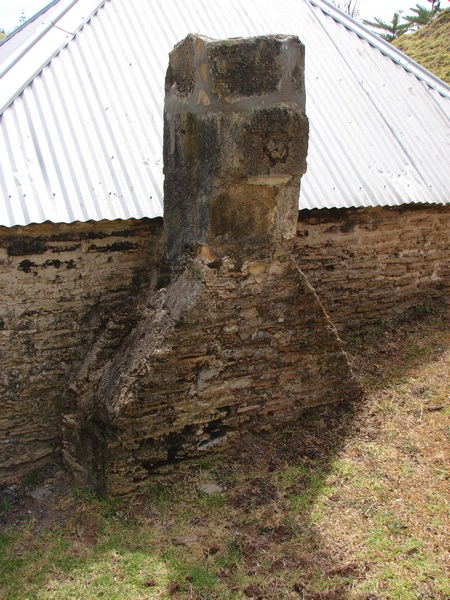
We continue. Along the flat, you can just make out the slightly raised lines that once marked field boundaries. The pines are part of a row of 100, planted to mark the 100th birthday of a local notable.
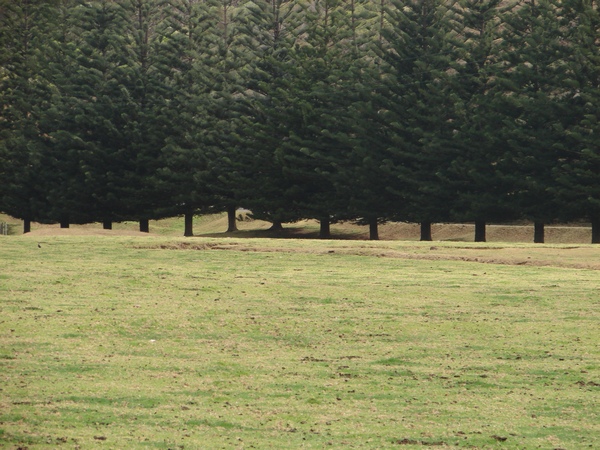
There are reminders along the way of the St James Walkway in New Zealand.
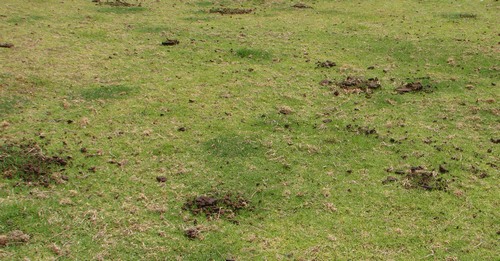
The foundations alone remain here
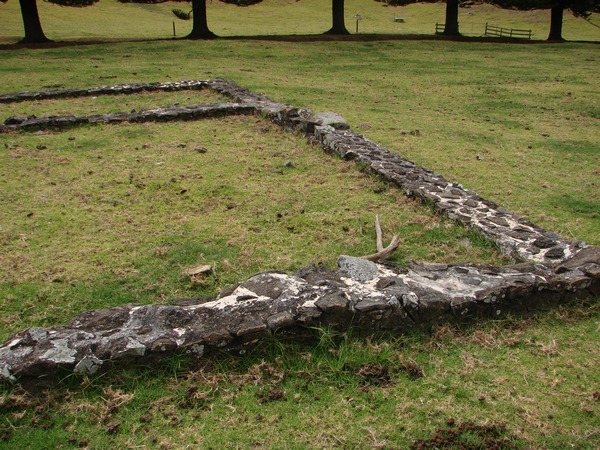
and along the way a little, right beside the stream, the remains of a proverbial piece of colonial construction, not nearly as durable as popular wisom would have us believe.
